- Home
- P. D. James
The Maul and the Pear Tree Page 25
The Maul and the Pear Tree Read online
Page 25
Who, then, were responsible for these crimes?
We can deduce a great deal about the principal murderer. He was cruel, reckless and violent; probably he was what in modern psychological jargon we call an aggressive psychopath, a man incapable of experiencing either pity or remorse. He was a strong man and one who had tested his strength, confident of his ability to overpower the stout and vigorous Williamson. Despite the barbarity of the slaughter, Professor Simpson regards it as perfectly feasible that the killing was the work of one man. The murderer lived in the district but was not permanently of it. Had he been, surely this overwhelming cruelty and aggression would have demonstrated itself earlier. He was probably, then, either a sailor whose violence normally found an outlet in the hazardous ardours of sea life and in fighting the French, or a prisoner recently escaped from the hulks. If he were a sailor it is probable that he had been on shore long enough to have spent his accumulated pay. Almost certainly he had a criminal history. He was a man capable of organising and influencing others, possibly through the power of his strength and cruelty, a natural leader and one who bound men to him by fear. It is extraordinary that no one betrayed him, even with the temptation of an unprecedented reward. It is highly probable that he was a fighting man who had seen action. Both crimes were systematic killings, typical of hand-to-hand combat. In both there was a sudden sortie, overwhelming force immediately applied, casual and wholesale butchery, the seizing of a momentary advantage when doors were open and the coast clear. In both there was evidence of a preliminary reconnoitre.
All these facts fit Ablass. The Times describes him as a stout man, six feet high. He had a history of violence and had organised a mutiny. He had no satisfactory alibi, since the woman who vouched for him was the woman who passed for his wife. He had been at home for two months – long enough for him to have exhausted his pay. He had money for which he could not account, and his explanation that he was living on the bounty of friends and on pawn money is inherently implausible. Mrs Vermilloe obviously had her suspicions of him.
There seems no reason why such a man should have included Williams in any enterprise. In fact, Ablass had reason to dislike Williams. Had not the latter managed to escape punishment at the time of the mutiny on the Roxburgh Castle by claiming that he had been led astray? This was not the confederate to take on an arduous enterprise, and with whom to share the spoils. Williams had nothing to contribute, not even physical strength. It is much more likely that Ablass would have seen Williams as the natural scapegoat if the enterprise failed. It is interesting that Ablass is the only suspect who was lame. It is tempting, therefore, to identify him with the lame man seen running up New Gravel Lane after the Williamson murders. But this man was the shorter of the two. The probability is that neither was concerned in the murder, although they may well have had good reasons for keeping out of the way of the police. If one or both of them had come out of the King’s Arms they must surely have been seen by Lee, the landlord of the Black Horse on the other side of the street, who was watching for the return of his wife and niece from the theatre. He admitted that he heard a faint voice from the King’s Arms crying ‘watch, watch’ although, surprisingly, he did nothing. Seven minutes later he saw Turner descending. If the killer had escaped into New Gravel Lane he must surely have seen him. The murderer could not have come through the front door since that was locked and the rescuers had to break in. To come through the side passage opening on to Gravel Lane would have precipitated him into the hands of his pursuers. Moreover, if these two men were the murderers, then Williams was certainly innocent. One of them was tall and the other was lame. Williams was neither tall nor lame. Ablass, though, emerged at the end as one of Graham’s prime suspects, and the reports in The Times of 17 and 27 January (quoted on page 194) link his name with the murders of both the Marrs and the Williamsons. On 31st January, the Prime Minister was still speaking of the belief that Ablass ‘was on a given time at a given place’. That place was either the King’s Arms or Marr’s shop. There is no reason to suppose that Ablass was ever able to rebut that belief.
And what of Hart? The strongest suspicion against Hart rests on the presence of the unused chisel on Marr’s counter. It is possible that this was used as a way of gaining entry to the house. There would have been no difficulty in obtaining entry to the King’s Arms, and the probability is that Williamson had not yet finally locked his door. But Marr, shutting up his shop at midnight, might be more reluctant to let in a stranger. In fact, both houses were fortuitously open, but the murderer could not have expected this. Hart had been working in the house; he could have explained that he had come to return the chisel. And there are other pointers to Hart. He had access to the Pear Tree, and he admitted, during his examination on Boxing Day, that it was to the public house that he went when his wife would not admit him to his own house a few nights before the Marr murders. But he did not lodge at the Pear Tree. It would, therefore, have been necessary for him to extract the maul some time before he needed to use it. He was a carpenter and could have borrowed for his own use both the maul and the chisel which killed the Williamsons sometime before the murders. He may well have known that Marr had money in the shop since he had been working there, and it is possible that the two had quarrelled. He would have been forced either to kill or acquiesce in killing because he was known to the family and could not leave the victims alive to recognise him. He was obviously suspected by Mrs Vermilloe who knew far more about these crimes than she ever testified; and he sent his wife to inquire secretly whether Williams had been taken up.
However ambiguous and disingenuous some of Mrs Vermilloe’s testimony may have been, there is little doubt that Williams’s landlady was convinced of his innocence and, of all the witnesses in the case, she was probably best placed to judge. She was obviously not a woman to defend him openly at the risk of antagonising the magistrates, drawing suspicion on herself, or jeopardising her chance of reward. But one of the most interesting features of the case is the way in which her belief in Williams’s innocence is revealed in her actions, words and evidence, particularly in her involuntary protest ‘Good God! why does he say so’, when her husband positively identified the maul, and her obviously genuine shock when she heard that Williams had been found dead. This so impressed the magistrates that they pressed for a reason and she said after some hesitation, ‘I should have been sorry if he was innocent that he should have suffered’. It was Mrs Vermilloe, according to The Times report of 6 January, who said bitterly that if the magistrates had spent as much time questioning Hart as they had her they would have learned something about the crime. It was another carpenter, Trotter, who told John Cobbet, the coal-heaver, ‘It is a very shocking concern and you would say so indeed if you knew as much as I do’. It was the same Trotter who visited Mrs Vermilloe to tell her that Williams would soon be cleared. Graham seems to have been convinced of Hart’s guilt. The evidence against him, had it ever been properly presented, would seem likely to have impressed even the Shadwell Bench.
After Williams’s death Mrs Vermilloe issued a statement, obviously prepared by a lawyer. It was printed in The Times of 20 January:
In consequence of a mis-statement in a morning paper respecting the woman, Mrs Vermilloe, in whose house the late wretched Williams lodged, she has published a letter dated the 18th inst. in which she states that in justice to an unfortunate and persecuted woman, which she considers herself to be, she wishes it to be made public that the statement purporting that she had made a verbal confession of having participated in the late shocking murders of Mr Marr’s and Mr Williamson’s families is totally without foundation. She further states that she had nothing to confess, except what all the country knew – that it had been her misfortune to have had for a lodger a man charged with the most atrocious crimes.
The last sentence is interesting, particularly the use of the word ‘charged’. One wonders whether it was at Mrs Vermilloe’s insistence that the sentence was so carefully worded.
>
And so, with the payment of the reward money, the case officially ended and the legend began. More than forty years later De Quincey published his Postscript. Under his pen the subtleties and mysteries of the case were finally obscured. Horror was refined by sensibility; cruelty and barbarity were embellished with calculated sadism; a crude lust for plunder was heightened into the malignancy of embodied evil creeping stealthily towards its innocent and unsuspecting prey. De Quincey’s account set the tone for subsequent writers on the case. They have been few, and the only mysteries they have pondered are Williams’s motive – gain, revenge, homicidal mania, sexual jealousy, a desire to destroy other men’s happy marriages born out of his own inadequacy have all been postulated – and whether he had an accomplice. The Ratcliffe Highway killings have been seen as a simple act of extreme barbarism holding little mystery or interest, since the perpetrator was caught and his guilt satisfactorily established. It is as if posterity has endorsed the verdict of the Shadwell magistrates and been as determined as they that the case shall be allowed quietly to die.
It now seems unlikely that we shall ever know the full truth. It may be that the violence which exploded with such devastating effect in Ratcliffe Highway in the dark nights of December 1811 had its fuse laid months earlier under the guns of Surinam, and that the log of the Roxburgh Castle, now lost or destroyed, holds the key to the mystery. But, despite the deficiencies of many of the contemporary records, two conclusions are inescapable. John Williams was virtually condemned and his memory vilified on evidence so inadequate, circumstantial and irrelevant that no competent court of law would commit him for trial. And whether he died by his own hand or that of another, it is at least probable that the corpse which was buried with such ignominy at the crossroads near St George’s Turnpike was the body of the eighth victim.
Epilogue
Much of that old Wapping survived until well into the twentieth century.
An early casualty was the King’s Arms, at 81 New Gravel Lane. In the eighteen-thirties the London Dock was extended, and the houses on the west side of the Lane were replaced by another huge dock wall; Williamson’s public house was among the properties demolished to make way for it. Then Ratcliffe Highway lost its identity. The Rev. R. H. Hadden, curate of St George’s-in-the-East, wrote a perfunctory obituary in 1880: ‘Ratcliffe Highway is no longer the inferno it once was. As a matter of fact, there is no Ratcliffe Highway now. We call it St George’s Street, East, by way of forgetting old associations.’ But one association, at least, survived the change. Thomas Burke, a historian of East London, was able to identify Marr’s shop as late as 1928; ‘and very markedly,’ he wrote, ‘the ramshackle place fits the frightful scenes of which it was the setting.’
The erasure of old memories was accelerated on the eve of the Second World War when a local authority, insensitive to tradition, chose to re-name three of Wapping’s prominent streets. In July 1937, Ratcliffe Highway, alias St George’s Street, became simply The Highway; in February 1939, the iconoclasts turned Old Gravel Lane into Wapping Lane; and a few months afterwards, New Gravel Lane was changed into Garnet Street. Then, in the following year, bombing completed the process of obliteration. On one of the terrible nights of September 1940, when much of London’s dockland was gutted, the remnants of Marr’s shop must have gone up in flames.
Now [in 1971] one can walk through the parish of St George’s-in-the-East to St Paul’s, Shadwell, and down to the deserted riverside wharves and jetties at Wapping, and hear little but the cry of seagulls and the distant roar of lorries hurtling along the Highway. The sailors, the dockers, the lodging houses and most of the taverns have vanished. The last ship sailed out of the London Dock three years ago, and the great warehouses that once treasured their stores from the East Indies, of drugs and tea and indigo and spices, stand empty or ruined.
Yet it needs little imagination to recognise, even today, landmarks of the old Wapping. The layout of the principal streets – The Highway, Wapping Lane and Garnet Street – still conforms exactly with that of the earlier streets depicted at the beginning of this book – Ratcliffe Highway, Old Gravel Lane, New Gravel Lane. A few names have survived every change. The great wall of the London Dock still casts its gigantic shadow over Pennington Street, and the corner with Artichoke Hill locates the site of the unoccupied house through which the murderers of the Marrs were supposed to have escaped. The square that contained Marr’s shop, bounded on two sides by Artichoke Hill and John’s Hill, on the others by Pennington Street and The Highway, can easily be traced. A block of flats named Cuttle Close fills the square now, and at its eastern corner a street sign, The Highway, E.1., marks the site of number 29. Across the road Hawksmoor’s distinctive tower presides over the once sadly bombed and now beautifully restored church of St George’s-in-the-East. Down by the river the Thames Police Station, hard by Wapping New Stairs, occupies the identical site of Harriott’s Office. From time to time a modern Metropolitan Police launch, the John Harriott drops anchor close by. The place where the pirates swung is marked on the wall of an old warehouse seventy yards to the west. One may still walk the precise route by which the corpse of John Williams was borne on its solemn progress to his grave at the crossroads of New Cannon Street and Cable Street. But the Pear Tree? Today Cinnamon Street, still cobbled as on the last day of December 1811, when that bier jogged along its length before turning round in Sir William Warren’s Square, ends in derelict warehouses and a bombed site. Somewhere among the rubble may lie remnants of Mrs Vermilloe’s lodging house.
But few relics of the Ratcliffe Highway murders are now ever likely to come to light; and, by a strange irony, there is no trace of the last resting place of any of the victims. The church of St Paul’s, Shadwell, where the Williamsons were buried, was replaced by a new building in the following year. Its churchyard is cluttered with undecipherable memorials, and no sign of the Williamsons’ tomb remains. The churchyard of St George’s-in-the-East was laid out as a public garden in 1886, when the gravestones were removed and placed against the boundary walls. On many the inscriptions have been eroded by time but the Marr memorial (pages 71–2) remains to record their bloody story. Nor were the remains of John Williams allowed to lie undisturbed. According to S. Ingleby Oddie, lately a Central London coroner, a gang of workmen employed in putting in new mains one hundred years later uncovered his uncouth grave. Two friends, Professor Churton Collins and H. B. Irving, a scholar and an actor, sharing a common interest in criminology, examined the bones. Churton Collins kept those from the right arm. Others, too, had their pickings. A scrap book now in the rectory of St George’s-in-the-East contains an undated entry about John Williams. It ends: ‘His skull is at present in the possession of the owner of the Public House at the corner of Cable Street and Cannon Street Road.’ It is perhaps fitting that John Williams’s skull should have been treasured in a public house near the scene of his notoriety, and that his remaining bones, like those of the Marrs and Williamsons, should lie in a lost and unmarked grave.
Bibliography
Unpublished Papers
H.O.42/118 – Correspondence from the Shadwell, River Thames and other Public Offices in Middlesex with the Home Office, December 1811
H.O.42/119 – Ditto for January 1812
H.O.42/120 – Ditto for February 1812
H.O.65/2 – Home Office Letter Book, containing correspondence from the Home Office to the Middlesex Public Offices, December 1811–February 1812
Newspapers and Journals
Issues of The Times, London Chronicle, Morning Post, Morning Chronicle, Courier, Examiner and Gentleman’s Magazine for the period.
Topographical
Broodbank, J. G., History of the Port of London, 2 vols. (1921)
George, Dorothy, London Life in the Eighteenth Century (2nd ed., 1930)
Hadden, R. H., An East End Chronicle: St. George’s-in-the-East Parish and Parish Church (1880)
Mitchell, R. J., and Leys, M. D. R., A History of London Lif
e (1958)
Rose, Millicent, The East End of London (1951)
Sinclair, Robert, East London (1950)
Smith, H. L., The History of East London (1939)

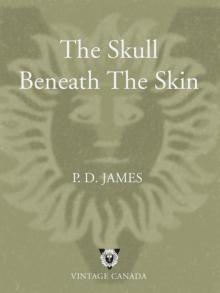 The Skull Beneath the Skin
The Skull Beneath the Skin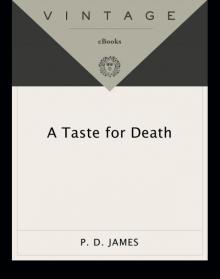 A Taste for Death
A Taste for Death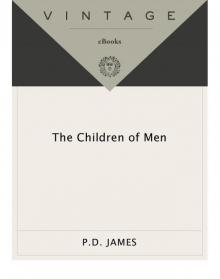 The Children of Men
The Children of Men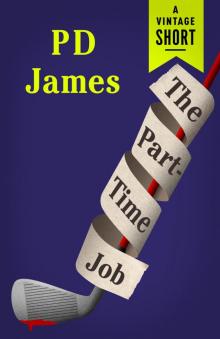 The Part-Time Job
The Part-Time Job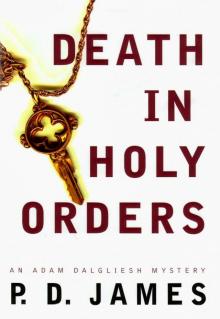 Death in Holy Orders
Death in Holy Orders The Victim
The Victim Shroud for a Nightingale
Shroud for a Nightingale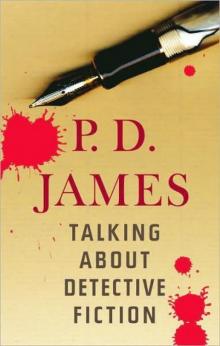 Talking about Detective Fiction
Talking about Detective Fiction Sleep No More
Sleep No More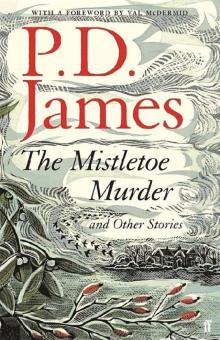 The Mistletoe Murder and Other Stories
The Mistletoe Murder and Other Stories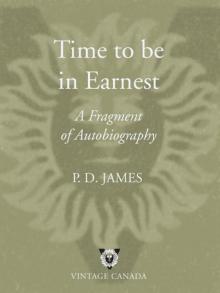 Time to Be in Earnest
Time to Be in Earnest Original Sin
Original Sin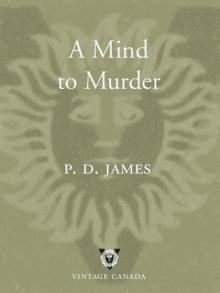 A Mind to Murder
A Mind to Murder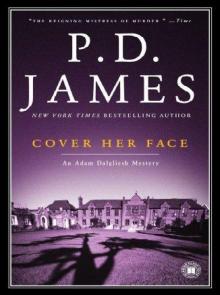 Cover Her Face
Cover Her Face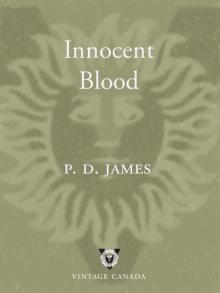 Innocent Blood
Innocent Blood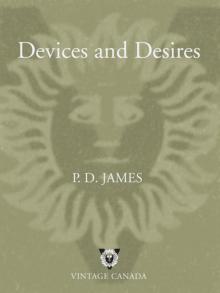 Devices and Desires
Devices and Desires Sleep No More: Six Murderous Tales
Sleep No More: Six Murderous Tales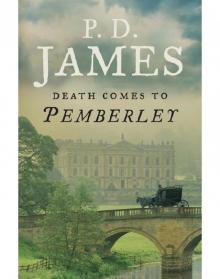 Death Comes to Pemberley
Death Comes to Pemberley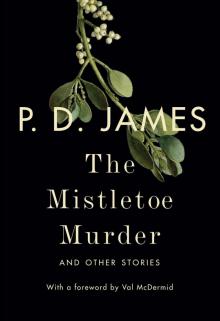 The Mistletoe Murder
The Mistletoe Murder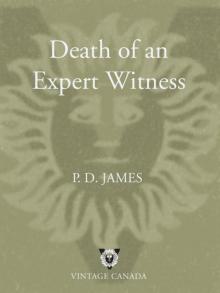 Death of an Expert Witness
Death of an Expert Witness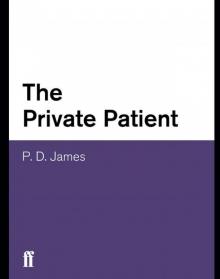 The Private Patient
The Private Patient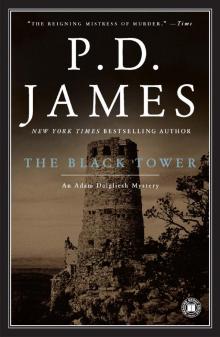 The Black Tower
The Black Tower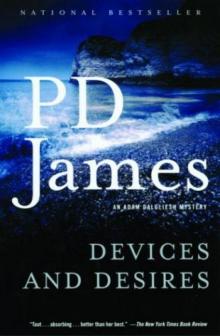 Devices & Desires - Dalgleish 08
Devices & Desires - Dalgleish 08 Unnatural Causes
Unnatural Causes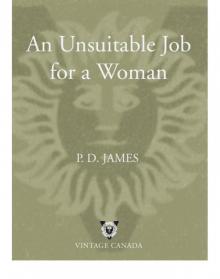 An Unsuitable Job for a Woman
An Unsuitable Job for a Woman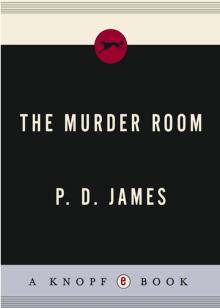 The Murder Room
The Murder Room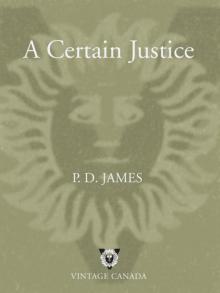 A Certain Justice
A Certain Justice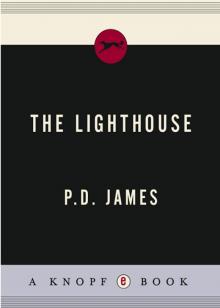 The Lighthouse
The Lighthouse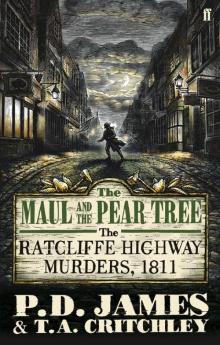 The Maul and the Pear Tree
The Maul and the Pear Tree